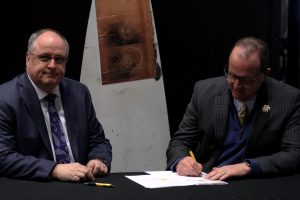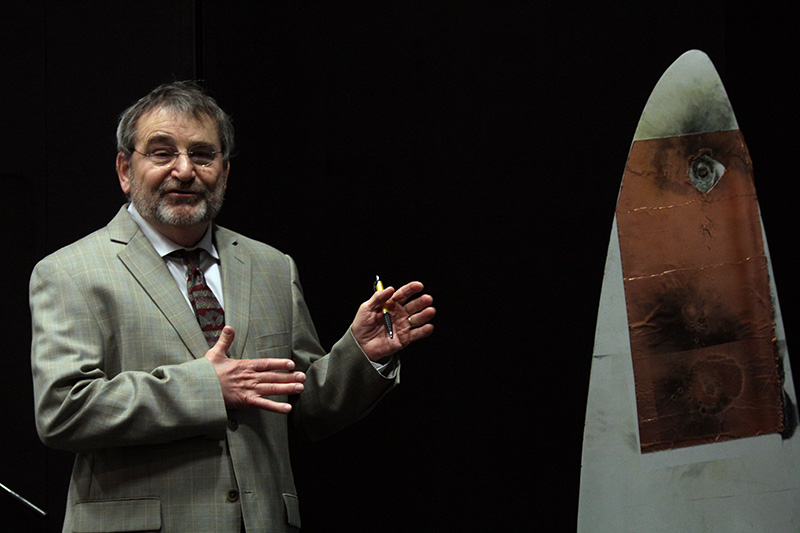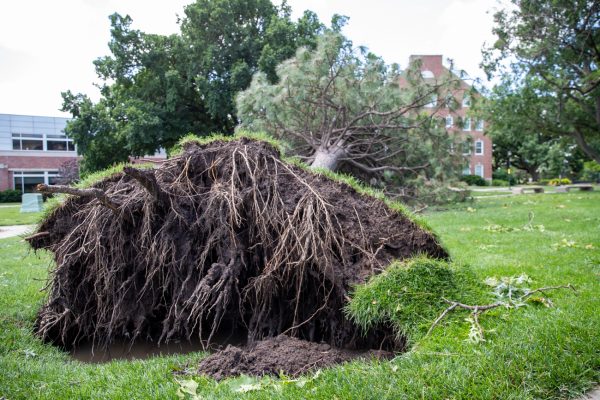WSU announces partnership with Lightning Divergent Systems
Billy Martin, senior research scientist for Lightning Diversion System’s Environmental Test Lab, explains the use of the new technology to press.
Wichita State and WSU Ventures now has exclusive licensing for technology that protects wind turbine blades from lightning.
According to a new agreement between the university and Lightning Divergent Systems (LDS), a Ducommun Company, the two can “further refine” the technology for the later intent of commercializing the product.
The new technology was developed by LDS and WSU’s National Institute for Aviation Research (NIAR) “over several years,” the release said.

Wichita State President Jay Golden (right) and Lightning Divergent Systems President David Willmot sign an agreement between the university and LDS giving exclusive licensing of new technology that protects wind turbines from lightning strikes. The new technology will be tested further with the intent to commercialize the product.
“At Wichita State University, we are focused on launching convergence sciences, and today is a great demonstration of that,” said WSU President Jay Golden. “The type of technology we’re developing today, in partnership with NIAR and LDS, shows WSU’s dedication to leveraging our expertise and research strengths to diversify the economy.”
Damage to wind turbines due to lightning strikes can cause hundreds of thousands of dollars in damage. While similar technologies already exist, those systems are “often unable to safely and effectively transfer lightning current to the ground,” the release said.
“What we hope to do with this technology is protect [wind turbines], which means they stay in the field longer, they stay on the turbines longer and there is less material going into landfills or recycling,” LDS President David Wilmot said.

Kylie Cameron was the Editor in Chief of The Sunflower for the 2019-2020 school year.
She is a senior studying political science and journalism and...









